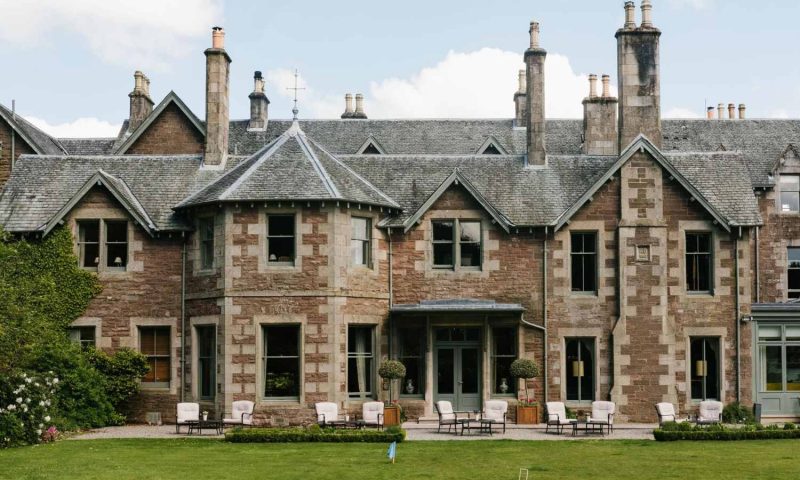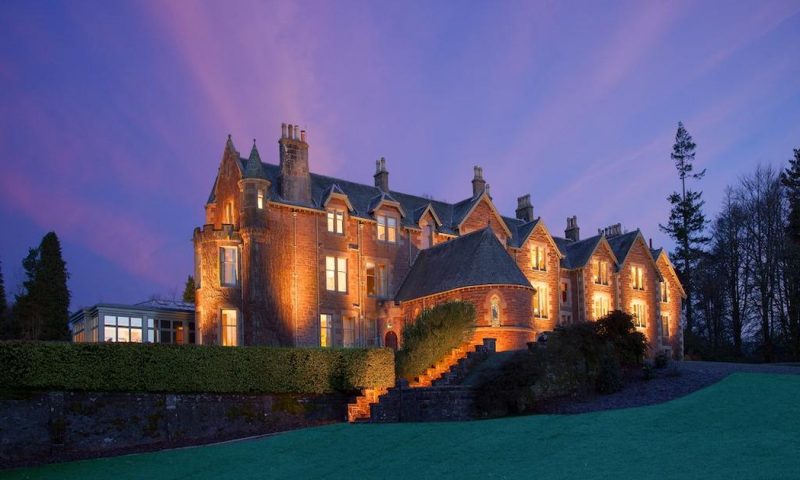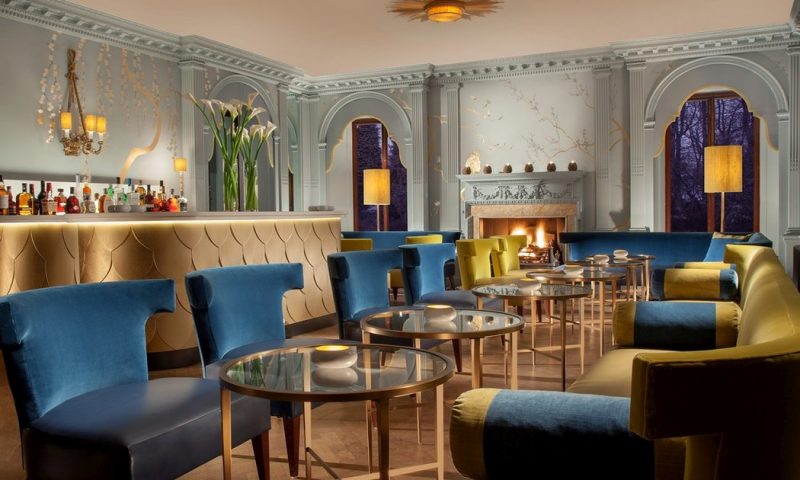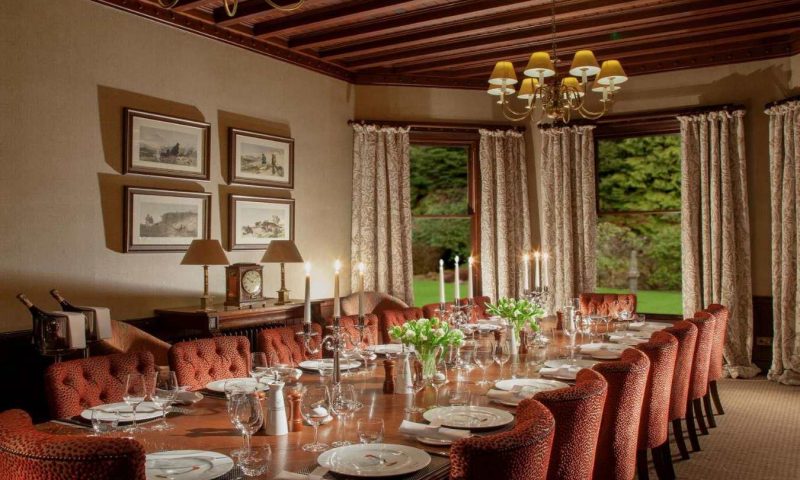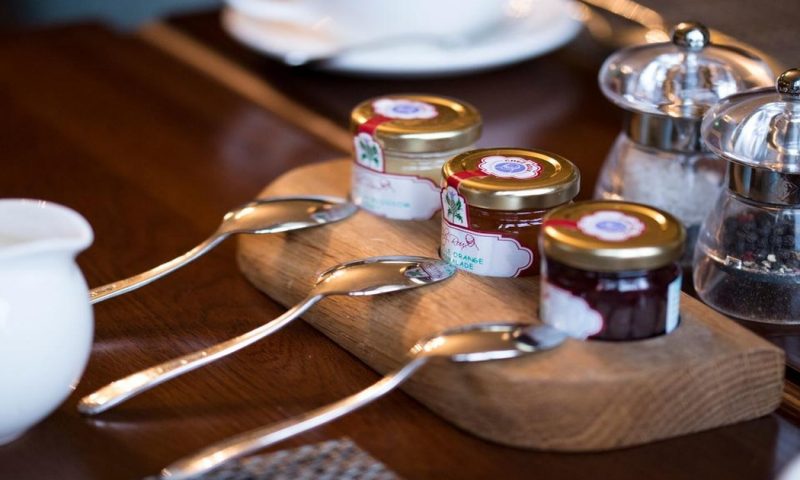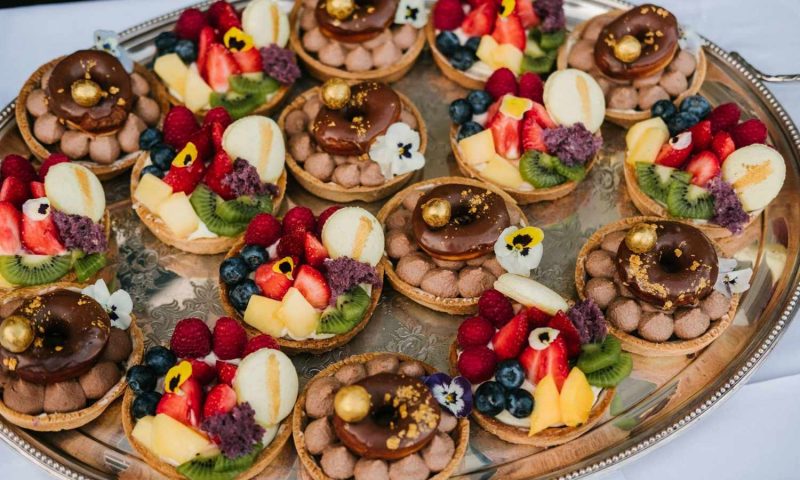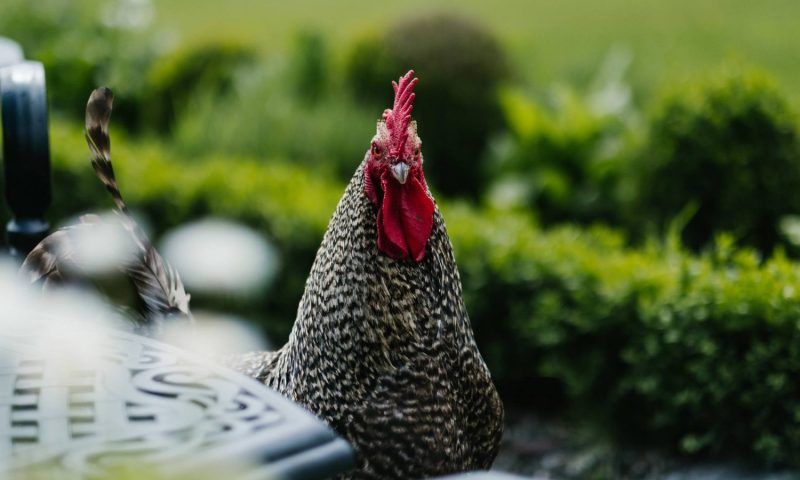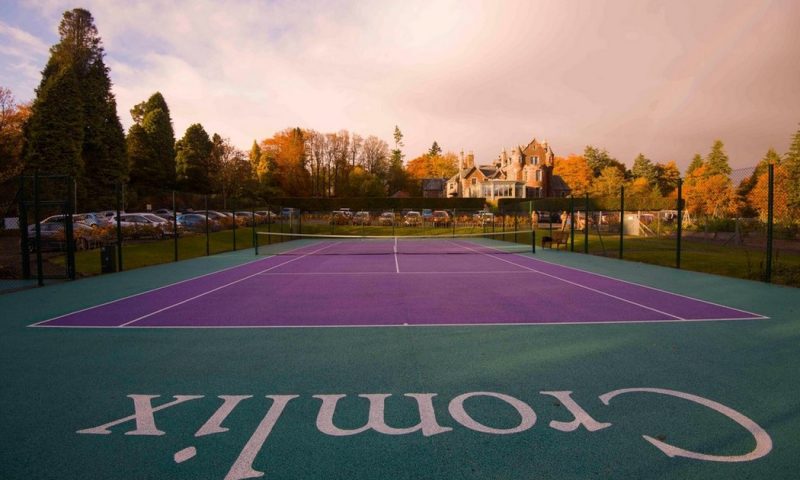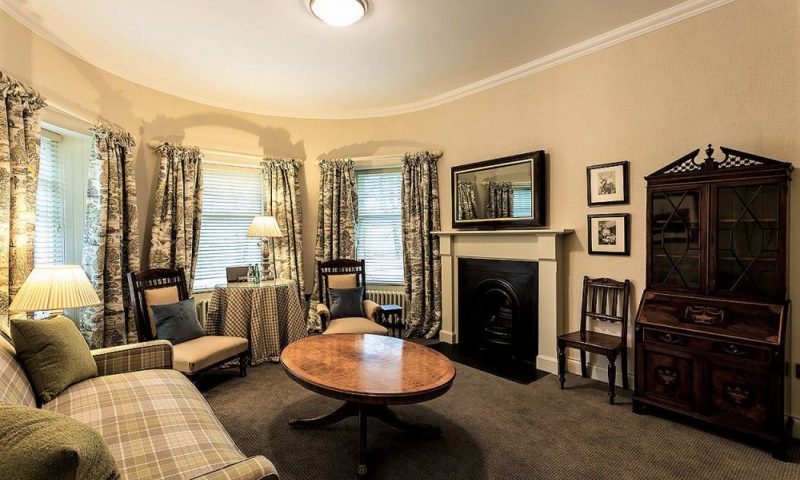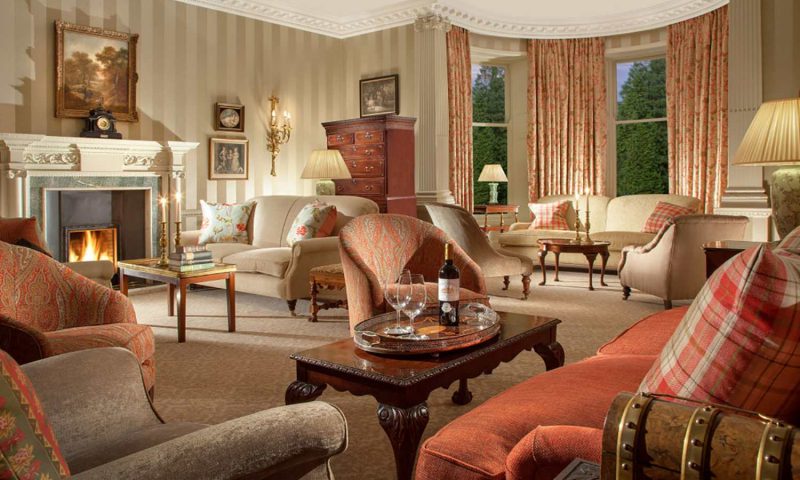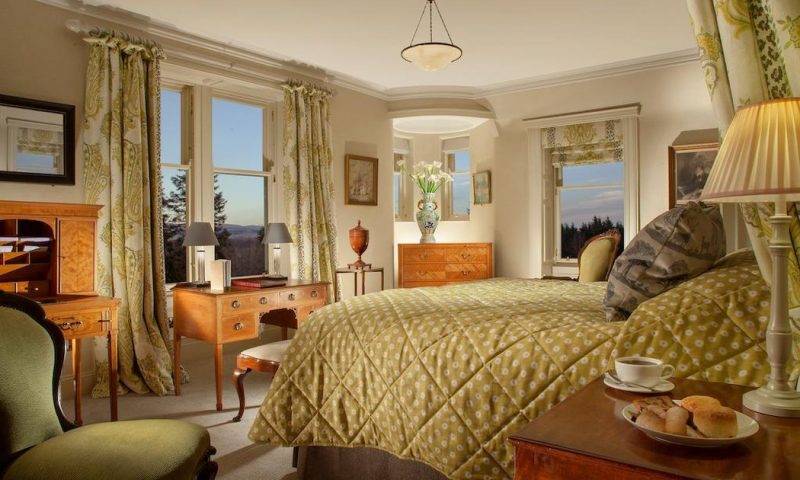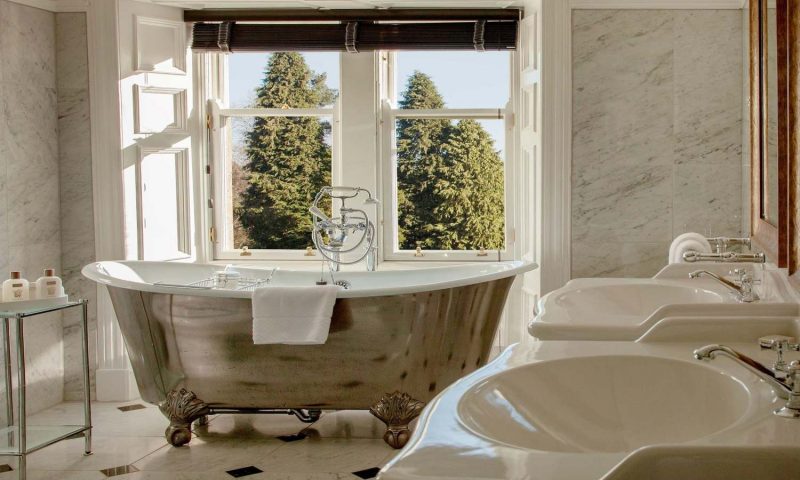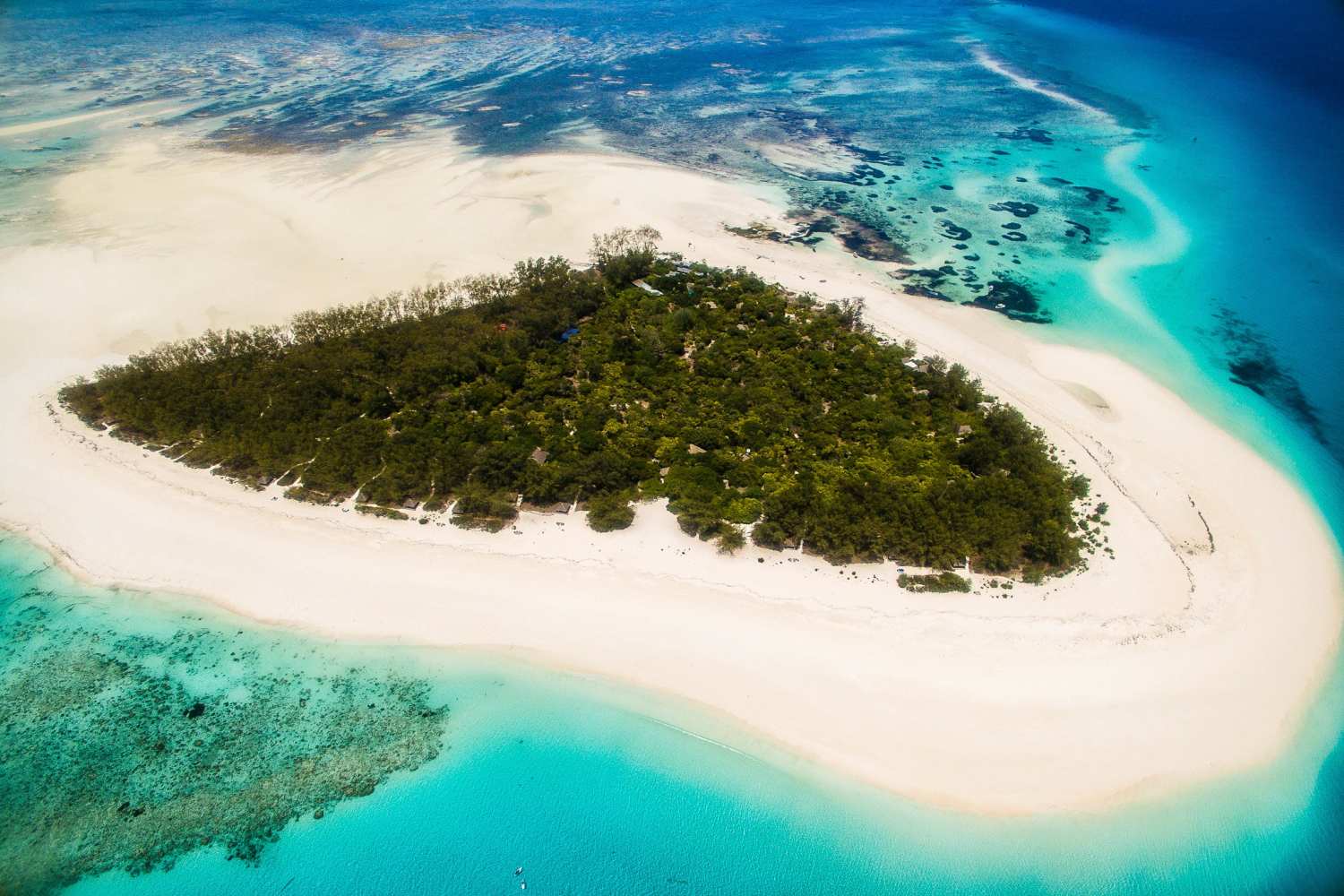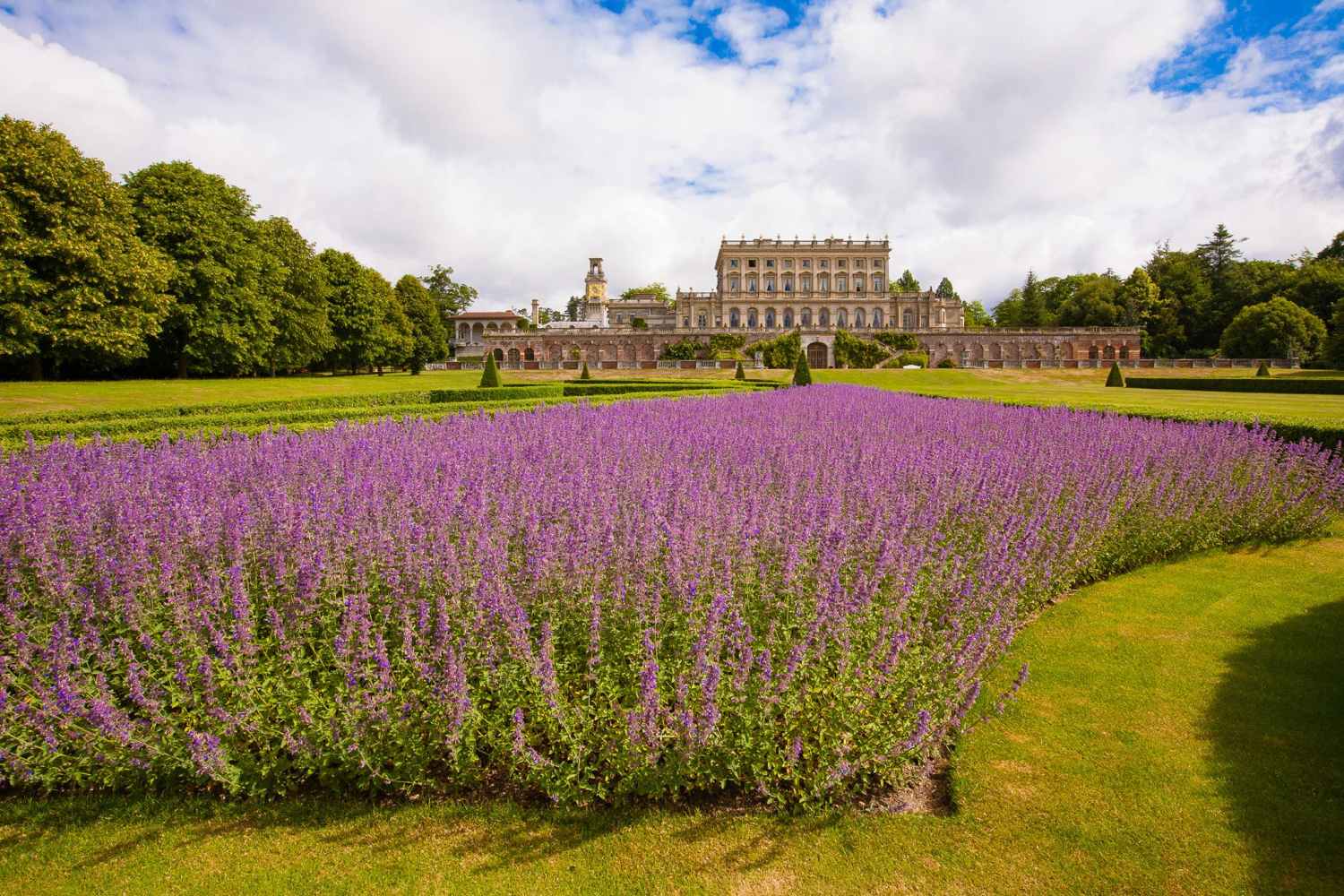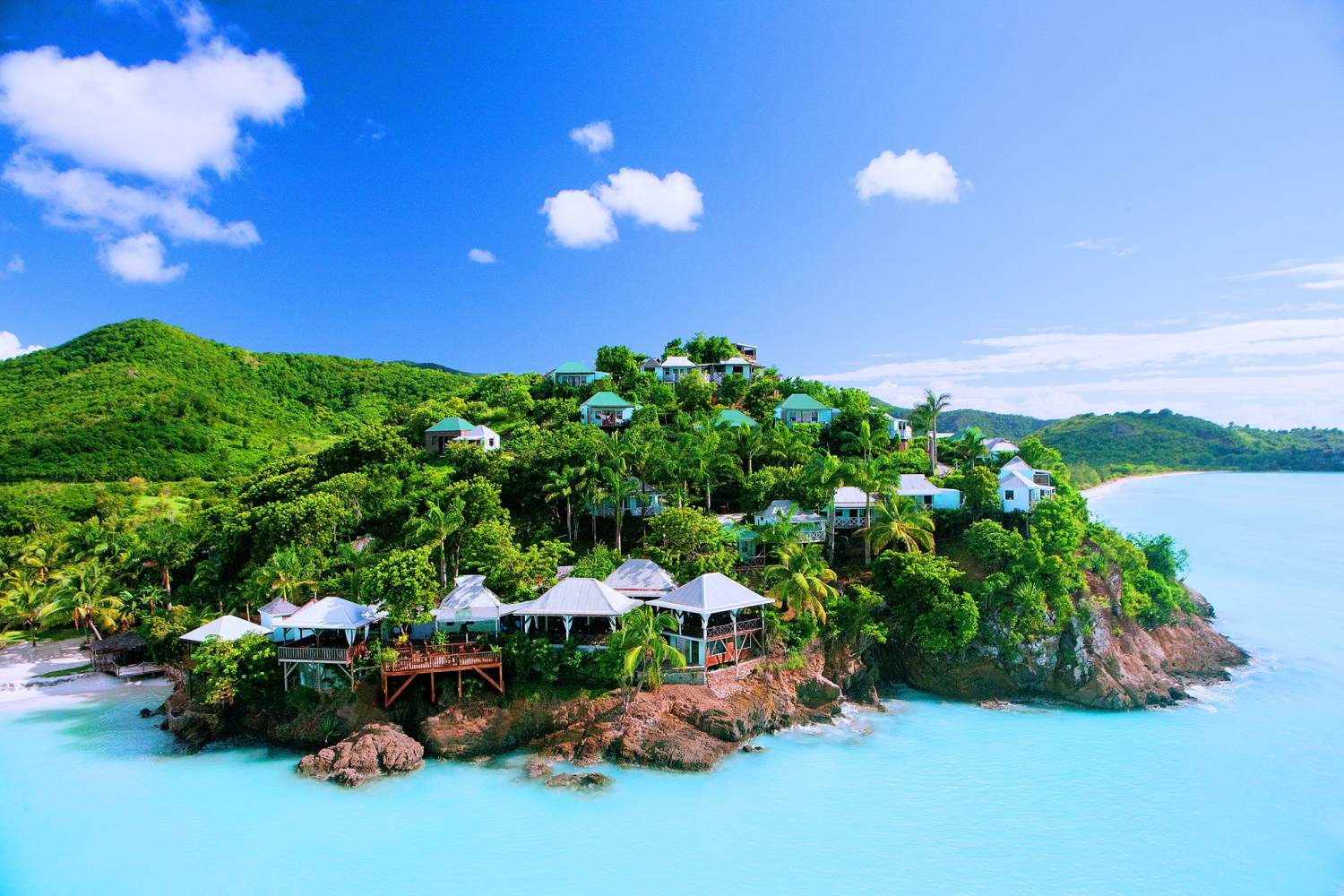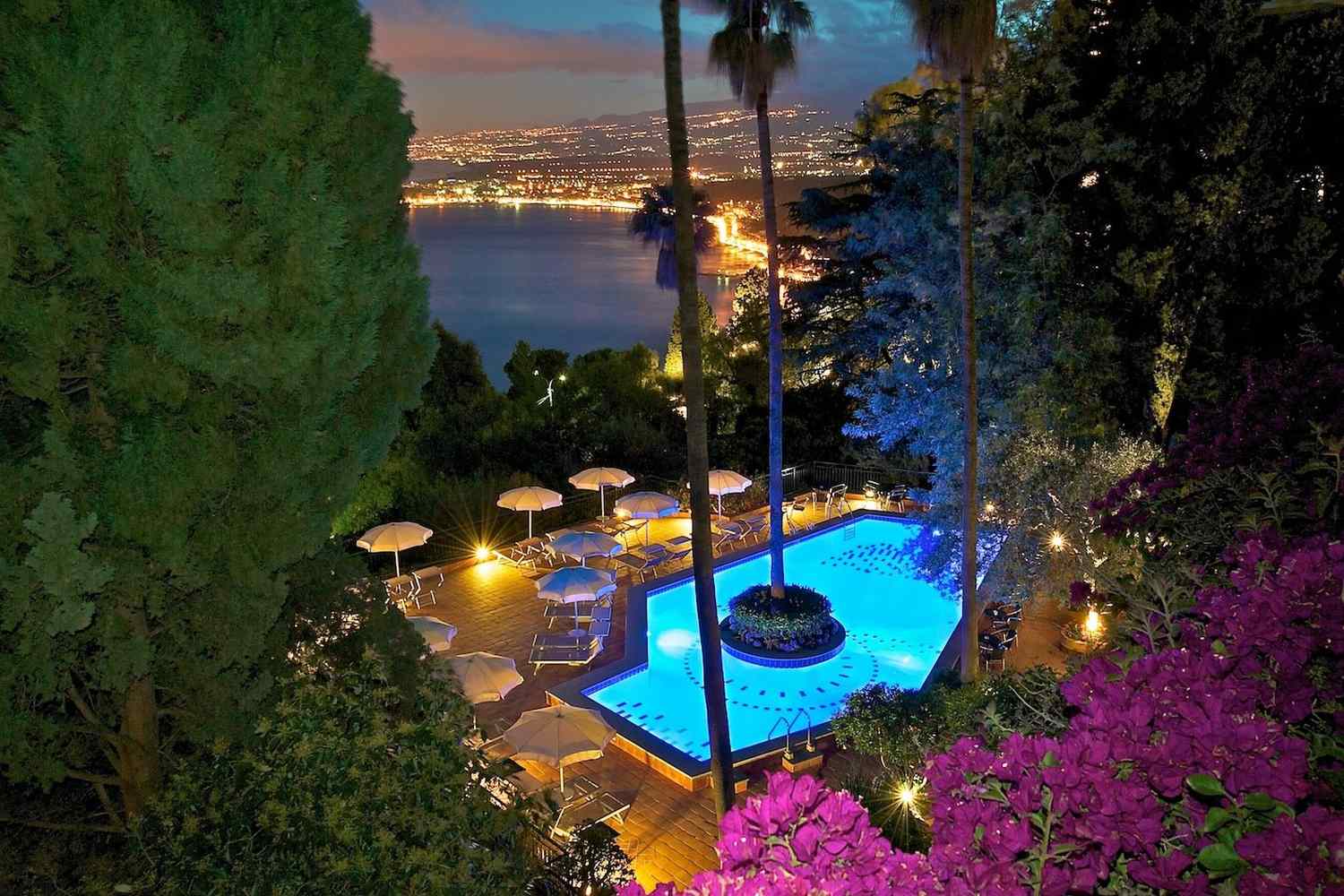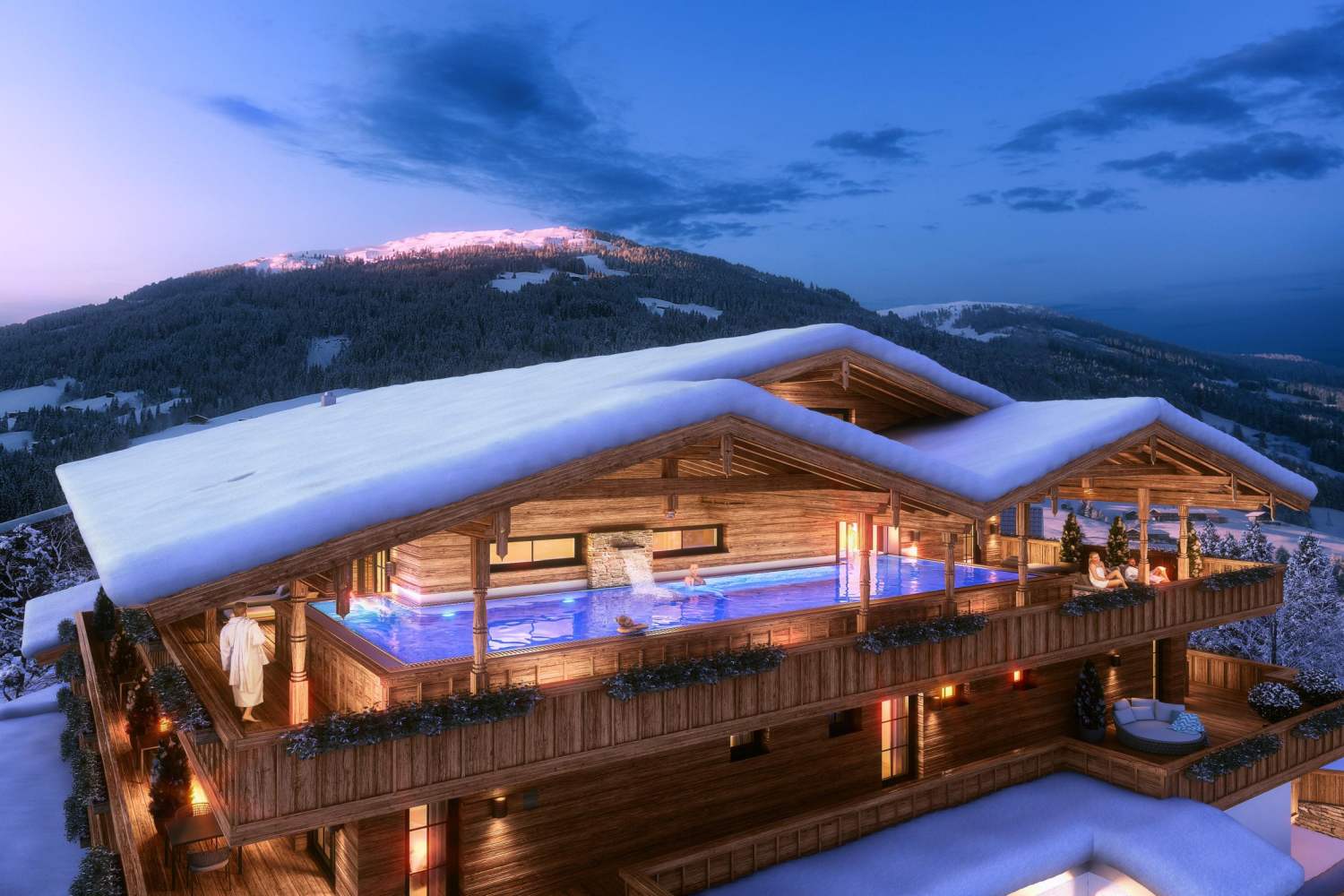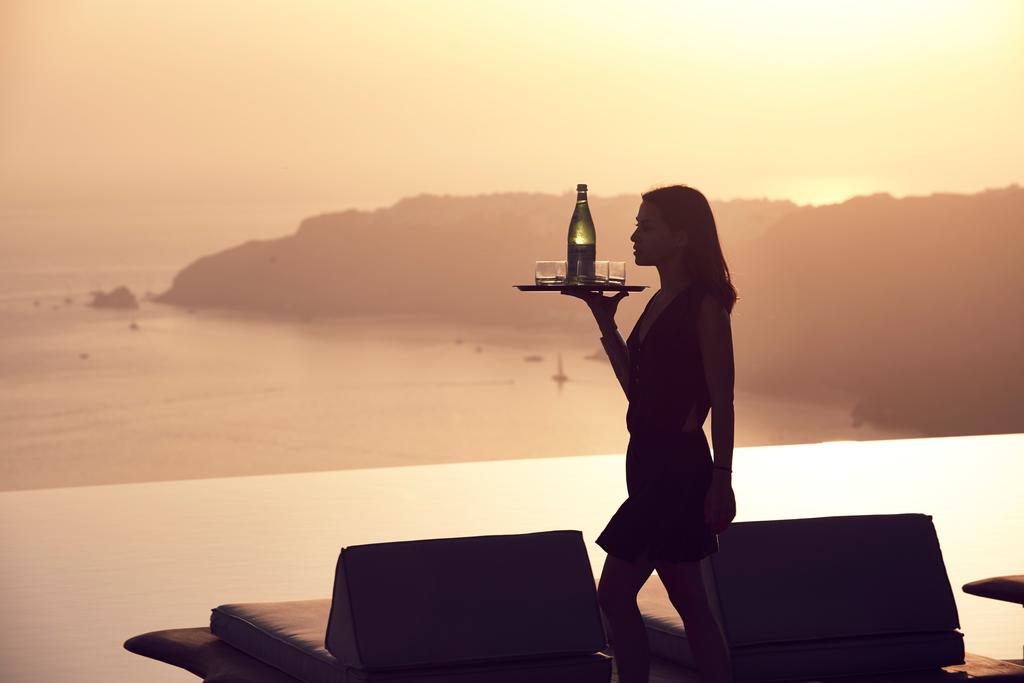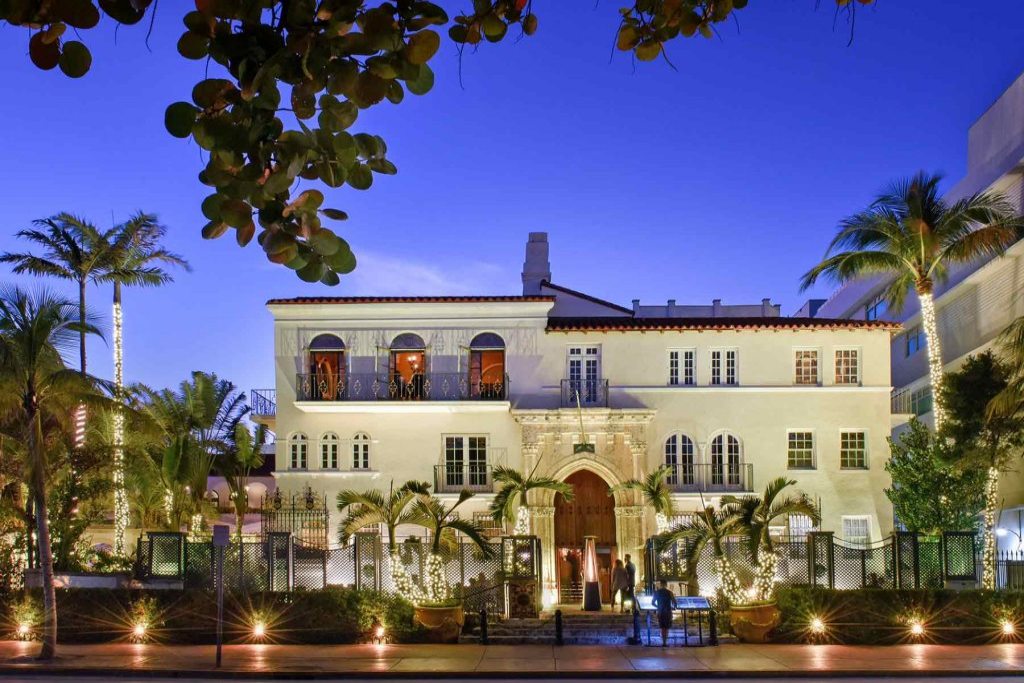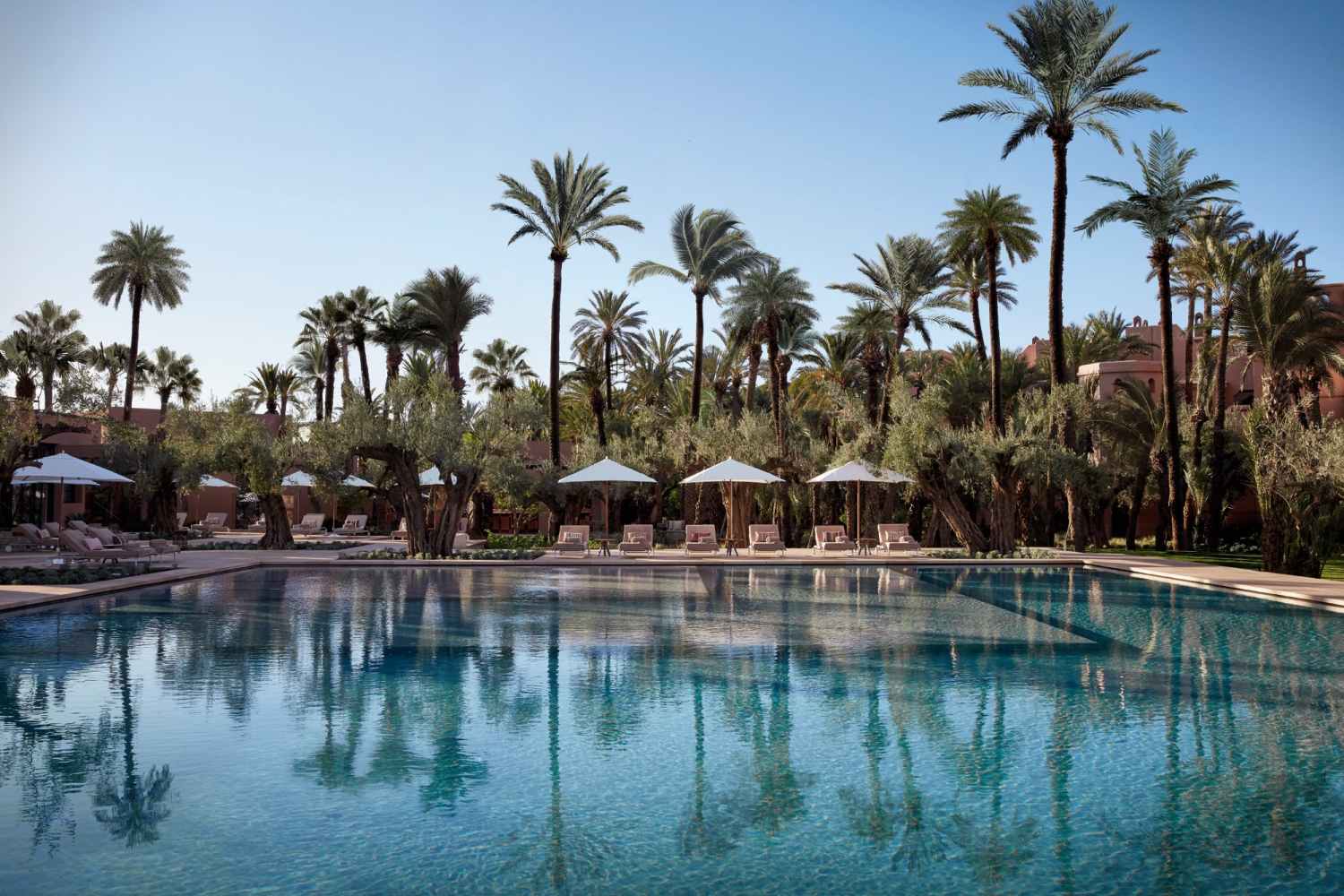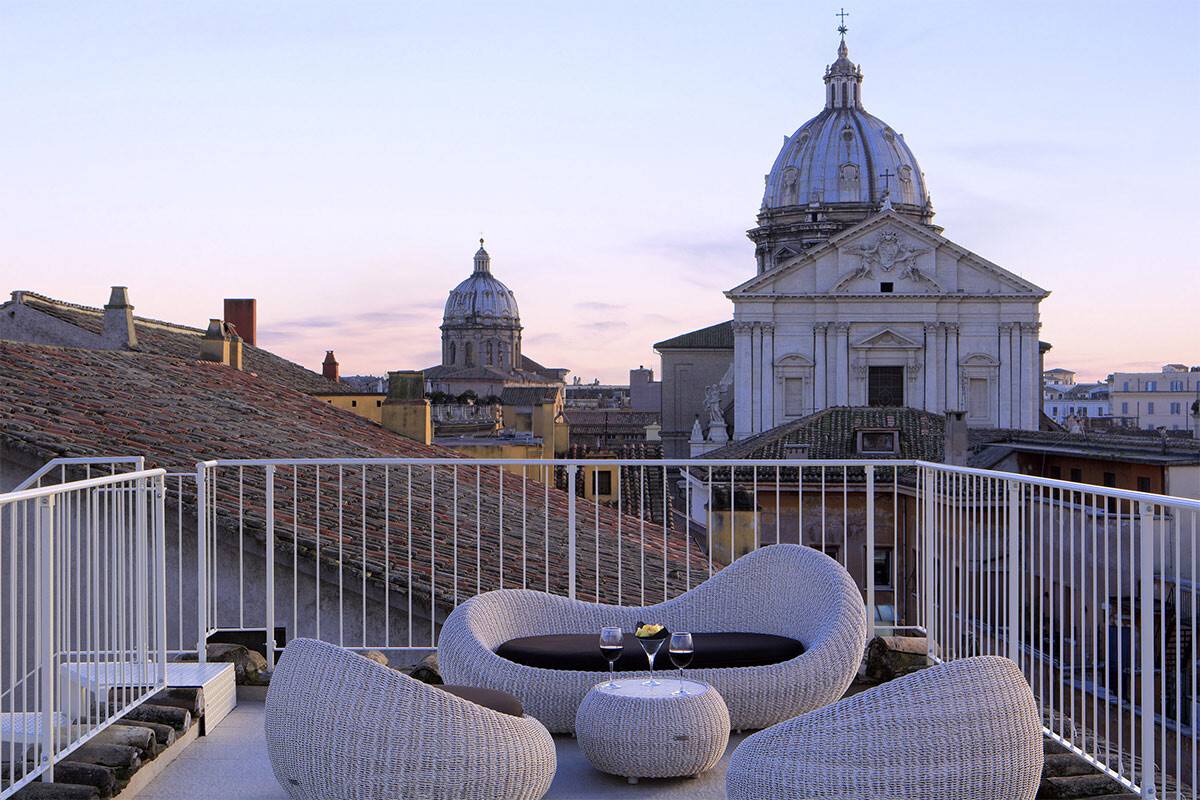When Scottish tennis superstar Andy Murray acquired Cromlix, close to his hometown of Dunblane, it signalled not only a return to his roots but the chance to reinvent the glorious era of grand country house living.
Following extensive refurbishment, the US Open, Olympic and Wimbledon champion has transformed the elegant Victorian Perthshire mansion into a luxury 15-bedroom and Gate Lodge, five-star destination.
The hotel, which opened in Spring 2014, offers guests the chance to experience the sort of decadent lifestyle once enjoyed by the Lairds of Cromlix, redefined for the 21st century by sumptuous surroundings and impeccable yet discreet service.
Situated in beautiful countryside, just three miles from Dunblane, Cromlix is set in 34 acres of secluded woodlands and garden grounds, with its own chapel and house loch.
The hotel boasts a Chez Roux restaurant, offering reasonable priced menus that focus on using seasonal locally sourced produce wherever possible, five suites and ten bedrooms, gate lodge accommodation, reception hall, two drawing rooms, conservatory, dining room, snooker and meeting rooms.
THE HISTORY
There is little known about the Lords of Cromlix before the 15th century. Evidence of earlier population has been found including some stone cists (coffins) of which the last was in 1901 – 500 yards west of the ‘Big House’.
THE NAME possibly derives from cram lech standing stone or, more likely, Crom Leac – The curve of sloping slab of a hillside. In 1593 Cromlixes is recorded and in 1750 Cromlec. In 1723 the castle of Cromlix was recorded as Cromligs. Unfortunately the castle no longer remains, but the site is just visible out with the Estate (now) at Cambushinnie.
THE ‘FAMILY’ In the early 15th century Edmund Chisholm acquired Cromlix. His son James became Bishop of Dunblane in 1487 and he was succeeded by William Chisholm (The “Robber Bishop”).
The early Chisholms were senior figures in the Church to the Court of King James III, Mary Queen of Scots and so on. William II Chisholm was the last Roman Catholic Bishop of Dunblane.
The Drummond name arose by marriage in the late 16th century and became Hay Drummond in 1739. This continued until the marriage of Evelyn to Terence Eden (8th Lord Auckland) in the early part of last century and the Eden Family still own much of the Estate.
THE HOUSE The Estate had been in the family for 4 centuries before “Cromlix Cottage” was built. Partly because they also had another Estate, properties in the South, a house in Dunblane (which was part of the Estate) and Hill House at Cromlix which was sometimes used by Arthur Drummond.
Captain Arthur Drummond built “Cromlix Cottage” as the House was first known in 1874. From the Red Dining Room & Outer Hall east was two stories whilst the remainder was only ground floor. A turret and rustic open porch formed the main entrance on the site of the present vestibule. In 1878 the House was destroyed by fire.
Only the chapel, badly damaged, survived. In 1880 it was rebuilt to the same design – photographs show the Public Rooms to be much as they are today. The rustic style of the Red Dining Room, Library and lack of any grand staircase is in keeping with the ‘Cottage’ theme.
Colonel Arthur Hay Drummond (nephew of Cpt. A.D.) became the laird of Cromlix just before 1900. The Colonel completed the enlargement of the house as it now stands in 1903. The porch was a later addition. Colonel H.D. landscaped the gardens and grounds employing up to 12 permanent gardeners.
The house was converted from a private residence to a luxury country house hotel in 1981. At the start of 2013, tennis legend Andy Murray purchased Cromlix, situated near his home town of Dunblane, in order to help attract new visitors to the area. After extensive refurbishment Cromlix opened on 1st April 2014.
ROOMS & SUITES
Each of the 10 bedrooms, 5 suites and one-bedroom gate lodge has their own individual design and character. Light spills into the rooms, which are all subtly decorated and enjoy splendid views over the manicured grounds or tennis courts and surrounding countryside.
The suites, most of which feature hand-painted freestanding baths in gold, silver and copper, have all been named by Andy in recognition of famous Scots: poet Robert Burns; Lady Elizabeth Bowes-Lyon who became Her Majesty Queen Elizabeth The Queen Mother, Robert the Bruce, medieval King of Scotland, Eden, the family who previously owned Cromlix, Sir Alex Ferguson, former football manager and player and Sir Chris Hoy, Olympic cyclist.
Room facilities include 32 inch televisions all disguised as mirrors, personal safe, i-pod docking stations, radio, free internet access and DVD player available upon request. All rooms boast luxurious Peter Reed 400 thread count Egyptian cotton bed linen and sumptuous Penhaligon’s Quercus toiletries.
THE GATE LODGE
The Gate Lodge is a traditional house situated 1.3km from the main house at the entrance to Cromlix. This one-bedroom lodge has its own sitting room, kitchen and bathroom and is ideal for those wanting privacy away from the main house to relax and enjoy all the luxuries Cromlix has to offer. The accommodation comprises:
- Living room with fireplace and pull out sofa bed which can accommodate two young children
- Kitchen with washing machine, stove, fridge freezer, toaster and kettle
- Large bedroom with king sized bed
- Family bathroom with separate shower and bath
- Parking
A full Scottish breakfast is available for you in the main building and dinner can be reserved in our Chez Roux Restaurant. Reservations are required as tables cannot be guaranteed on the day. Our Cromlix Car is on hand to pick you up at any time to being you to the main building.
CHEZ ROUX RESTAURANT
Dining at Cromlix is a culinary experience that need not be confined to the dining room. There are lots of luxurious spots within the hotel that can accommodate more intimate, private dining.
Chez Roux restaurant, originally overseen by the late legendary French chef Albert Roux is now overseen by his son Michel Roux Jr, and is run by award-winning executive head chef Darin Campbell.
The restaurant is housed in the glass-walled conservatory overlooking the grounds and offers diners a ringside view of the chefs at work in the extensive open kitchen. Guests can also opt to dine in the small Study which seats up to 10, the first floor Billiard Room which can accommodate 20 and the Garden Room for parties up to 24.
AFTERNOON TEA
Visit the tranquil surroundings of Cromlix with our options of Afternoon Tea. Select your choice of tea leaves and enjoy our Chef’s savoury finger sandwiches, freshly made scones and selection of sweet delicacies.
WEDDINGS
The elegant house, enchanting gardens and stunning location make Cromlix a truly beautiful setting for a wedding. The house provides an impressive backdrop to your celebration with versatile facilities that will make your wedding day a joy for you and every one of your guests. We hold a licence that means you may choose to have the wedding ceremony (religious and civil) here as well as the reception.
EXCLUSIVELY YOURS
At Cromlix we offer two main hire options: Non-Exclusive hire of your chosen function room for ceremony and meal only, ideal for smaller, intimate weddings; or full Exclusive Hire of the hotel including 16 bedrooms and all public areas. Wedding parties over 50 guests and all weddings with evening entertainment are required to hire Cromlix on an exclusive use basis.
THE CEREMONY
A marriage ceremony at Cromlix is a very special experience. We are very fortunate to have our own Chapel attached to the hotel. Please see more information on The Chapel under our History section.
The Chapel can seat 30 people for a ceremony and is consecrated by the Scottish Episcopal Church. Alternatively, the ceremony can be held in our Drawing Room with its lovely bay window or our Garden Room overlooking the beautiful gardens.
Floral displays can be arranged to complement the bridal bouquet and with music to suit your taste together with the historical décor, paintings and antiques, the setting could not be more romantic.
THE WEDDING BREAKFAST
The perfect wedding breakfast is a careful selection of dishes that complements your vision of the day. Dining at Cromlix can be as relaxed or as formal as the party requires and we will be delighted to work with you to create just the right atmosphere and menu for your wedding celebration.
BUSINESS MEETINGS
The quiet elegance of the house together with its breathtaking location make Cromlix a perfect retreat for boardroom meetings, decision making and corporate entertaining. Only a short drive from Edinburgh, Stirling and Glasgow, Cromlix provides a stunning rural setting for exclusive boardroom meetings and corporate away days.
With refined public rooms on the ground floor and the Billiard Room and Study on the first floor of the house, we are able to provide flexible, elegant spaces that can be set up to suit your particular requirements.
CHAPEL & BURIAL GROUND
All the needlework in the Chapel, including the alter frontals and banners were made by Mary Hay Drummond, wife of Colonel Arthur Hay Drummond who owned the estate from 1901 until his death in 1953.
The latter was responsible for the acquisition of the side drums one of which is Scots Guards and was given to him by a commanding officer of that regiment. The other six are from the Berkshire Regiment in which he served.
He presented a set of drums to the regiment on condition that he should take them with him when he retired, when he gave them a new set. The silver mounted bagpipes, dressed in Drummond Tartan, were played regularly round the dinner table by the family piper until the Second World War.
Of the family banners, two are Hay and two are Drummond; the Boar’s head is the emblem of the Chisholm Family, and it was through the Chisholms that the estate came into ownership of the family in the 16th Century.
The communion plate is of some interest. The paten is modern, but of the two vessels used for Sacramental Wine the larger was not originally designed for that Sacrament. It is, in fact, a ciborium, the vessel used in the Roman Catholic Church for the Sacramental Bread; such vessels apparently came into general use early in the middle ages.
The Cromlix one dates from around 1690 and was probably made in the Low Countries. The small chalice is German, made in Ulm, and dates from about 1650.
The organ was made by John R Miller of Dundee and dates from the first decade of this century. Modern organ techniques criticise it for being so designed that it attempts to simulate an entire orchestra. To some other lovers of music therein lies its charm.
The copper gilt ova plate enclosing a miniature of a female saint receiving a cross and martyrs crown from Christ and the Blessed Virgin is probably Spanish of the 19th Century. Visitors will notice on the wall at the entrance to the Chapel, a tobacco pipe mounted together with emblems of a uniform.
These belonged to a Russian Officer who, as he lay mortally wounded on the battlefield of the Crimea, was comforted by Robert Drummond, a member of the opposing army and then owner of Cromlix.
The Russian entreated Robert to take his emblems as a measure of his gratitude; Robert himself was later wounded and died on board a hospital ship within sight of the English shore.
The Burial Ground which is a few hundred yards south-west of the house, below the garden square, was laid out by Captain Arthur Hay Drummond and consecrated on 9th September 1886 by Haldane Chinnery, Bishop of Argyll and the Isles.
In 1892 the re-building of Dunblane Cathedral being finished, some of the stones from the ancient ruin were brought to Cromlix and put as a screen at the end of the Burial Ground by Arthur, who also placed the same stone cross to the memory of his brother Robert.
FISHING
We have our own loch on the Estate called House Loch. This loch is stocked with Brown Trout and is a pleasant way for our guests to cast a few lines or maybe try fishing for the first time. We hold a small selection of rods at the hotel and our guests are welcome to pick these up at any time and wander over to the loch for a cast.
Scottish Salmon fishing in Scotland: 1st February until 31st October. The river enjoys a traditional spring run from the opening day followed by an exciting sea trout run between March and July accompanied by a less predictable grilse run.
An excellent autumn run continues from late August until the end of the season in October. The Teith has a well-deserved reputation for some large fish and every year fish over 20lbs and even some over 30lbs are landed.
Normal fishing hours are from 9.00am until 5.30pm. A 15ft fly rod is suitable for most of the year although smaller rods are appropriate in low water conditions. A house rod is retained throughout the season. A voluntary catch and release policy is operated and anglers are encouraged to return fish in order to aid the recovery of stocks.
GOLF
The following list provides details of the golf courses within a two hour drive of Cromlix. We suggest when booking a round of golf that you check their requirements, green fees and availability as this can vary considerably.
- Dunblane – 18 hole, Par 68, 5980 yards: This quality parkland course provides an enjoyable and testing challenge for golfers of all abilities. Designed by Major Cecil Hutchison, the then Amateur Champion, and the Open Champion, James Braid, its lush fairways and manicured greens, together with wonderful views in all directions, ensure a golfing experience not quickly forgotten.
- Bridge of Allan – 9 hole, Par 66, 4932 yards: The course sits on the hill above the magnificently preserved Victorian Spa town of Bridge of Allan, winner of the Best Small Town in Scotland title in both 2010 and 2011. There are no flat lies on this tricky nine hole course where it is possible to go out of bounds on every tee shot. Delightful blind shots, quaint stone walls and crossing fairways take you back in a time machine to the Victorian era.
- Auchterarder – 18 hole, Par 68, 5757 yards: Auchterarder Golf Club is a parkland course and has spectacular views towards Glendevon. The PGA Centenary Course at Gleneagles also runs along side it.An easy walking course of 5775 yards it has a variety of holes with 6 challenging par 3s.
- Stirling – 18 hole, Par 71, 5464 yards: Stirling Golf Club is one of the most picturesque courses in Scotland, with inspiring backdrops of the Old Town of Stirling, built on ancient volcanic slopes, crowned by the historic Castle rising above spectacular crags and there are stunning views in all directions across Central Scotland, the Ochil and Lomond Hills to the east, and the Carse of Stirling, the Trossachs and the Southern Highlands beyond.
- Callander – 18 hole, Par 66, 5091 yards: Lying at the entrance to the Loch Lomond and The Trossachs National Park, the course consists of stylish wooded parkland with panoramic views to Ben Ledi. The 15th is one of the most famous par 3s in Scotland.
- Gleneagles – 3 x 18 hole: A winning blend of natural beauty and golfing adventure, the three championship golf courses at Gleneagles are regarded among the very best golf courses in the world:
-
- PGA Centenary Course Created by Jack Nicklaus, the PGA Centenary Course is the Host Venue for The 2014 Ryder Cup, where the cream of European and American golf will battle it out on Scottish soil for the first time in more than 40 years.
- The King’s Course Opened in 1919, the masterful King’s has tested the powers of golfing aristocracy for almost a hundred years.
- The Queen’s Course The natural beauty of the Queen’s is an inspirational battle of wits for anyone in love with the great game.
- Carnoustie – 3 x 18 hole: Carnoustie consists of three courses, all of which are rated in the top 50 Links courses in the UK and Ireland (Golf Digest June 2011). The Championship Course has recently (2012) been ranked at no 1 on the Rolex Top 1000 courses in the world.
- The Championship Course has hosted 7 Open Championships, 1 Ladies Open and 1 Seniors Open making it one of the very few to have done so in the UK. Generally regarded as the toughest of the Open venues for those who understand the game a little more will know it is probably the fairest too. Without doubt though Carnoustie Championship Course does have the toughest closing stretch of holes anywhere and those finishing the final 4 holes with no more than a bogey should be suitably content with their play.
- The Burnside is the baby brother and is approaching 100 years old. It is from here where Ben Hogan qualified from before going on to win the Open itself in 1953. Promising to come back Hogan never did which leaves Carnoustie in the unique position to actually being able to say anyone who is anyone has played Carnoustie!
- The Buddon was added in 1980 and currently has 9 par 3s. We are redeveloping the course into what will become a much sterner test of golf.
- St Andrews – 6 x 18 hole
- Old Course The oldest and most iconic golf course in the world. The Swilcan Bridge and Hell Bunker are recognised across the globe, yet the greatest feature of the Old Course is that despite its grand status it remains a public golf course, open to all.
- The Castle Course The newest addition to St Andrews Links, The Castle Course opened in 2008 becoming the seventh course at the Home of Golf and part of the largest public golfing complex in Europe. Set on a rugged cliff-top with spectacular views over St Andrews, The Castle Course offers a memorable golfing experience.
- The New Course The oldest ‘new’ course in the world, the second course at the Home of Golf was designed by the Keeper of the Green Tom Morris in 1895 and it was imaginatively named to differentiate from its famous neighbour. Boasting undulating fairways and challenging greens, the New Course is a classic test of Links golf.
- Jubilee Course The third championship course at the Home of Golf, the Jubilee is considered by many to be the most challenging course on the famous Links. Built in 1897, it was originally intended for use by ladies and beginners however after seeing its prime golfing location between the New Course and the sea, the Jubilee was converted to a championship layout in 1988.
- Eden Course Only slightly more forgiving than its contemporaries on the seaward side of the Links, the Eden Course was built in 1914 by Harry S. Colt whose use of natural boundaries and severe bunkers provides a course full of character.
- Strathtyrum Course Designed to complement the tougher championship layouts at the Home of Golf, the Strathtyrum was opened in 1993. Although few in number (15), the bunkers are cunningly placed and there is considerable emphasis on iron play accuracy. The greens themselves are large and have slopes and borrows which can test ev
CASTLES & BATTLEFIELDS
Through the rolling hills of Perthshire you will soon notice Stirling Castle and the Wallace Monument on the horizon which dominate the skyline and take visitors to the heart of the nation’s independence. Learn about Scotland’s history in Stirling Castle and climb to the top of the monument constructed in honour of Scotland’s greatest hero, William Wallace.
From the castle ramparts you can see the sites of many historical battlefields, including the Battle of Bannockburn. Experience one of the most important battles in Scotland in this award winning visitor centre. Throughout the day your driver-guide will talk you through the legends of the area and the significant events that took place to finally bring about Scotland’s independence.
NATURE & FORAGING TOUR
Today you will experience Scotland’s nature and outdoors at it’s finest. Perthshire offers a wonderfully varied patchwork of forests, featuring some of the country’s best loved viewpoints and tallest trees. Your private guide will take you on a beautiful tour through the wilderness.
As you explore Perthshire you will also have the opportunity to taste some local food, as well as some wild produce from a successful foraging experience. You’ll be following in the footsteps of legendary plant hunters, lairds and foresters – Tay Forest Park’s soaring woods are their living legacy, alive with wildlife and rich with history.
LANDROVER EXPERIENCE
Land Rover Experience Scotland is your exclusive opportunity to be immersed in the all-terrain capability of Land Rover. Whether you attend a one-hour off-road introduction or a full day adventure, you are guaranteed to leave feeling a real sense of achievement.
Every experience is hosted by one of the world class instructors all of whom benefit from a wealth of knowledge and expertise to help you make the most out of your experience.
WINTER WHISKY TASTING
- OBAN. (Sweet) A 14 year old combining the sophistication of the Highlands with a touch of the peaty style of the Islands. It is rich and full-bodied with a mellow fruity finish.
- GLENKINCHIE. (Ladies whisky) Glenkinchie is a soft, sweetly aromatic malt from the ‘Garden of Scotland’. Is has a fresh, grassy sweetness balanced with a warming, dryish finish.
- CRAGGANMORE. (Medium) A 12 year old elegant, sophisticated Speyside with the most complex aroma of any malt. Astonishingly fragrant with sweetish notes and a smoky maltiness on the finish.
- TALISKER. A bit smoked. A 10 year old and the only malt produced on Skye. Its seaweedy, smoky nose and sweet maltiness is perfectly complimented by its spicy, long finish.
- DALWHINNIE. A 15 year old gentle, delicate malt from the wild and windswept Highlands. It is subtle, smooth delicately smoky malt with a heathery honey finish.
- LAGAVULIN. (This is Smoked.) A 16 year old distinctive and powerful Islay malt. It is deeply smoky and peaty with a velvety, complex finish.
SCOTLAND’S WILDE SIDE
Scotland’s wild countryside provides endless possibilities for the outdoors enthusiast. There are a vast array of exciting, open-air and socially responsible activities for the adventurous traveller.
Today you will do some off-road sightseeing as you explore some of Scotland’s rich and beautiful forestry, teaming with wildlife and fantastic flora and fauna. You will be treated to a beautiful bothy lunch in the hills before venturing out on the water for an alternative view of the surrounding landscapes.
DUNBLANE
Dunblane, the hometown of Andy Murray, is located 3 miles from Cromlix. A small Scottish country town, Dunblane has not only easy access to the Scottish countryside but also great links into the cities of Stirling, Edinburgh and Glasgow.
Within Dunblane itself there are several things to do and see, from the Dunblane Museum to the beautiful Dunblane Cathedral, and of course the Golden Post Box, gilded after Cromlix’s owner Andy Murray won gold in the 2012 Olympics men’s singles tennis. With parks and a river flowing through the town, Dunblane is also a lovely spot to simply walk or cycle through and enjoy.
STIRLING CASTLE
Stirling Castle, located in Stirling, is one of the largest and most important castles, both historically and architecturally, in Scotland. The castle sits atop Castle Hill, an intrusive crag which forms part of the Stirling Sill geological formation.
It is surrounded on three sides by steep cliffs, giving it a strong defensive position. Its strategic location, guarding what was, until the 1890s, the farthest downstream crossing of the River Forth, has made it an important fortification from the earliest times.
Most of the principal buildings of the castle date from the fifteenth and sixteenth centuries. A few structures of the fourteenth century remain, while the outer defences fronting the town date from the early eighteenth century.
Several Scottish kings and queens have been crowned at Stirling, including Mary, Queen of Scots, in 1542. There have been at least eight sieges of Stirling Castle, including several during the Wars of Scottish Independence, with the last being in 1746, when Bonnie Prince Charlie unsuccessfully tried to take the castle.
Stirling Castle is a Scheduled Ancient Monument and is now a tourist attraction managed by Historic Scotland.
BANNOCKBURN
The Bannockburn Heritage Centre is situated at one of the most important historic sites in Scotland. In June 1314, on the battlefield beside the Bannockburn Heritage Centre, King Robert the Bruce routed the forces of King Edward II to win freedom for the Scots from English domination.
Today, Bannockburn Heritage Centre contains an exhibition on this period of the battle and an audio-visual presentation. Near the centre is the famous Borestone site which, by tradition, was Bruce’s command post before the battle.
Walk the battlefield and admire the impressive equestrian statue of Bruce by Pilkington Jackson. Throughout the summer you can enjoy living history presentations and mini battlefield tours. Family craft activities are available daily during the summer and at weekends during the rest of the year.
A brand new state-of-the-art visitor centre opened in March 2014, ahead of the 700th anniversary of the Battle of Bannockburn and the year of Homecoming 2014.
WALLACE MONUMENT
The National Wallace Monument (generally known as the Wallace Monument) is a tower on the summit of Abbey Craig, a hilltop near Stirling in Scotland. It commemorates Sir William Wallace, the 13th century Scottish hero.
The tower was constructed following a fundraising campaign which accompanied a resurgence of Scottish national identity in the 19th century. In addition to public subscription, it was partially funded by contributions from a number of foreign donors, including Italian national leader Giuseppe Garibaldi.
Completed in 1869, to the designs of architect John Thomas Rochead, at a cost of £18,000, the monument is a 67-metre (220 ft) sandstone tower, built in the Victorian Gothic style.
It stands on Abbey Craig, a volcanic crag above Cambuskenneth Abbey, from which Wallace was said to have watched the gathering of the army of King Edward I of England, just before the Battle of Stirling Bridge.
The monument is open to the general public. Visitors climb the 246-step spiral staircase to the viewing gallery inside the monument’s crown which provides expansive views of the Ochil Hills and the Forth Valley.
LOCH LOMOND & THE TROSSACHS NATIONAL PARK
The park consists of many mountains and lochs, and the principal attractions are scenery, walking, and wildlife. For walkers seeking a challenge, the West Highland Way passes through the park, while the mountains of Ben Lomond and The Cobbler in the Arrochar Alps attract most hikers. Less intrepid visitors can detour from the A82 to view the Falls of Dochart.
There is a national park visitor centre at the southern end of Loch Lomond, called Loch Lomond Shores, which includes a visitor information centre at the most popular gateway to the park, as well as an aquarium, shops and restaurants.
On Loch Katrine, visitors can travel on the historic steamship SS Sir Walter Scott, while cruises on Loch Lomond can be taken from Tarbet, Argyll and Bute and Balloch; there is also an extensive water taxi service between most lochside communities.
EDINBURGH
Edinburgh’s city centre ranks as one of the most handsome in Europe. With its elegant Georgian streets set against the dramatic silhouette of Edinburgh Castle and the medieval turrets and spires of the Old Town, the Scottish capital’s city centre offers visitors an exciting fusion of shopping, dining and architectural splendour. Attractions include Edinburgh Castle, the National Gallery of Scotland and the Old Town.
GLASGOW
Glasgow is the largest city in Scotland and the third largest in the United Kingdom. It is situated on the River Clyde in the country’s West Central Lowlands. To say there’s something for everyone in Glasgow is an understatement.
There is a fantastic variety of attractions, museums, galleries, shops, festivals and concerts to be enjoyed throughout the year and with an integrated transport system in and around the city, exploring really couldn’t be easier.
Or take a little guidance and enjoy a tour of this fabulous city. Attractions include Glasgow School of Art, Glasgow Science Centre, Kelvingrove Art Gallery and Museum, the Royal Concert Hall plus outstanding shopping.
SCOTCH WHISKY TOUR
Through the day you will enjoy an in-depth local insight into the Highlands marvels and landscapes as well as some unique whisky experiences at each distillery. Along your Highland journey you will pass through picturesque Perthshire and across the stunning landscapes of the Trossachs National Park.
You will venture into Scotland’s oldest working distillery for a tour and blending experience. In the afternoon, you will have the chance to taste whisky straight from the casks at a distillery which featured in Outlander.
The contrasts between today’s distilleries will provide an taster of the vast range of whiskies available in Scotland and the differences in the distilling processes.
SCOTTISH HISTORY TOUR
Through the rolling hills of Perthshire you will soon notice Stirling Castle and the Wallace Monument on the horizon which dominate the skyline and take visitors to the heart of the nation’s independence. Learn about Scotland’s history in Stirling Castle and climb to the top of the monument constructed in honour of Scotland’s greatest hero, William Wallace.
From the castle ramparts you can see the sites of many historical battlefields, including the Battle of Bannockburn. Experience one of the most important battles in Scotland in this award winning visitor centre.
Throughout the day your driver-guide will talk you through the legends of the area and the significant events that took place to finally bring about Scotland’s independence.
A TASTE OF THE HIGHLANDS
Today you will experience Scotland’s nature and outdoors at it’s finest. Perthshire offers a wonderfully varied patchwork of forests, featuring some of the country’s best loved viewpoints and tallest trees. Your private guide will take you on a beautiful tour through the wilderness.
As you explore Perthshire you will also have the opportunity to taste some local food, as well as some wild produce from a successful foraging experience. You’ll be following in the footsteps of legendary plant hunters, lairds and foresters – Tay Forest Park’s soaring woods are their living legacy, alive with wildlife and rich with history.
SCOTTISH ADVENTURE DAY
Scotland’s wild countryside provides endless possibilities for the outdoors enthusiast. There are a vast array of exciting, open-air and socially responsible activities for the adventurous traveller.
Today you will do some off-road sightseeing as you explore some of Scotland’s rich and beautiful forestry, teaming with wildlife and fantastic flora and fauna. You will be treated to a beautiful bothy lunch in the hills before venturing out on the water for an alternative view of the surrounding landscapes.
EDINBURGH & SURROUNDINGS
Scotland’s beautiful capital city, Edinburgh, is filled with thousands of years of history. Soaking in all that information can be difficult, so our experienced local driver-guide will cover all the iconic sites as well as some lesser-known haunts.
Edinburgh and its surroundings offers something for everyone, from its rich historic legacy, iconic sights to the latest in modern architecture and design. At the top of the high street, also known as the Royal Mile, you will find Edinburgh’s famous castle, where you will discover the history of this stunning city.
You will then head to Leith, the historic port area of the city, where you will discover the Royal Yacht Britannia, which transported the royal family and their retinue all over the world for fifty years. ‘Edinburgh,’ said writer Robert Louis Stevenson, ‘is what Paris ought to be’.
